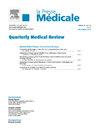法国的 HTA 和护理的适当性:超越报销。
IF 3.4
3区 医学
Q1 MEDICINE, GENERAL & INTERNAL
引用次数: 0
摘要
卫生技术评估(HTA)主要用于补偿/撤资和获得创新目的。此外,卫生评价是促进适当护理的有用工具,因为它描述了评估卫生技术的最新验证水平。因此,基于HTA开发了一些工具(正确使用表、药物索引决策支持系统、实践或使用监督),以促进医疗保健专业人员使用药物、医疗设备或诊断和治疗程序的适当性。HTA还可以支持临床实践指南(CPG)的制定和更新,这是临床实践改进的主要工具。此外,HTA可以通过对推荐的卫生技术进行报销来增加CPG的实施。因此,HTA和CPGs可以完美地结合起来,以实现协同的同步或异步行动,通过实现更动态和更有效的行动,特别是在稳健性和更新方面,来改善护理的相关性。然而,在实地执行方面,HTA与CPGs有着同样的困难。要面对这些问题,无论定义了什么实施策略,都需要采用多方面的方法,包括反复沟通,以及HTA阶段上下游的医疗保健专业人员、患者和利益相关者的参与。本文章由计算机程序翻译,如有差异,请以英文原文为准。
French HTA and appropriateness of care: Beyond reimbursement
Heath Technology Assessment (HTA) is mainly used for reimbursement/disinvestment and access to innovation purposes. In addition, HTA is a useful tool to promote appropriateness of care, as it describes the updated level of validation of assessed health technologies. Thus, several tools (proper use sheets, drug-indexed decision support systems, supervision of practices or use) based on HTA are developed to promote the appropriateness of use of drugs, medical devices or diagnostic and therapeutic procedures among healthcare professionals.
HTA can also support the development and the update of clinical practice guidelines (CPG) which are the main tool of clinical practice improvement. In addition, HTA can increase CPG implementation through reimbursement of recommended health technologies. Therefore, HTA and CPGs can be perfectly articulated to enable synergistic synchronic or asynchronic action to improve the relevance of care by enabling more dynamic and efficient actions, particularly in terms of robustness and updating.
However, HTA shares with CPGs the same difficulties of implementation in the field. To face them, whatever the implementation strategy defined, it requires a multifaceted approach involving iterative communication and the involvement of healthcare professionals, patients and stakeholders, both upstream and downstream of the HTA stages.
求助全文
通过发布文献求助,成功后即可免费获取论文全文。
去求助
来源期刊

Presse Medicale
医学-医学:内科
自引率
3.70%
发文量
40
审稿时长
43 days
期刊介绍:
Seule revue médicale "généraliste" de haut niveau, La Presse Médicale est l''équivalent francophone des grandes revues anglosaxonnes de publication et de formation continue.
A raison d''un numéro par mois, La Presse Médicale vous offre une double approche éditoriale :
- des publications originales (articles originaux, revues systématiques, cas cliniques) soumises à double expertise, portant sur les avancées médicales les plus récentes ;
- une partie orientée vers la FMC, vous propose une mise à jour permanente et de haut niveau de vos connaissances, sous forme de dossiers thématiques et de mises au point dans les principales spécialités médicales, pour vous aider à optimiser votre formation.
 求助内容:
求助内容: 应助结果提醒方式:
应助结果提醒方式:


